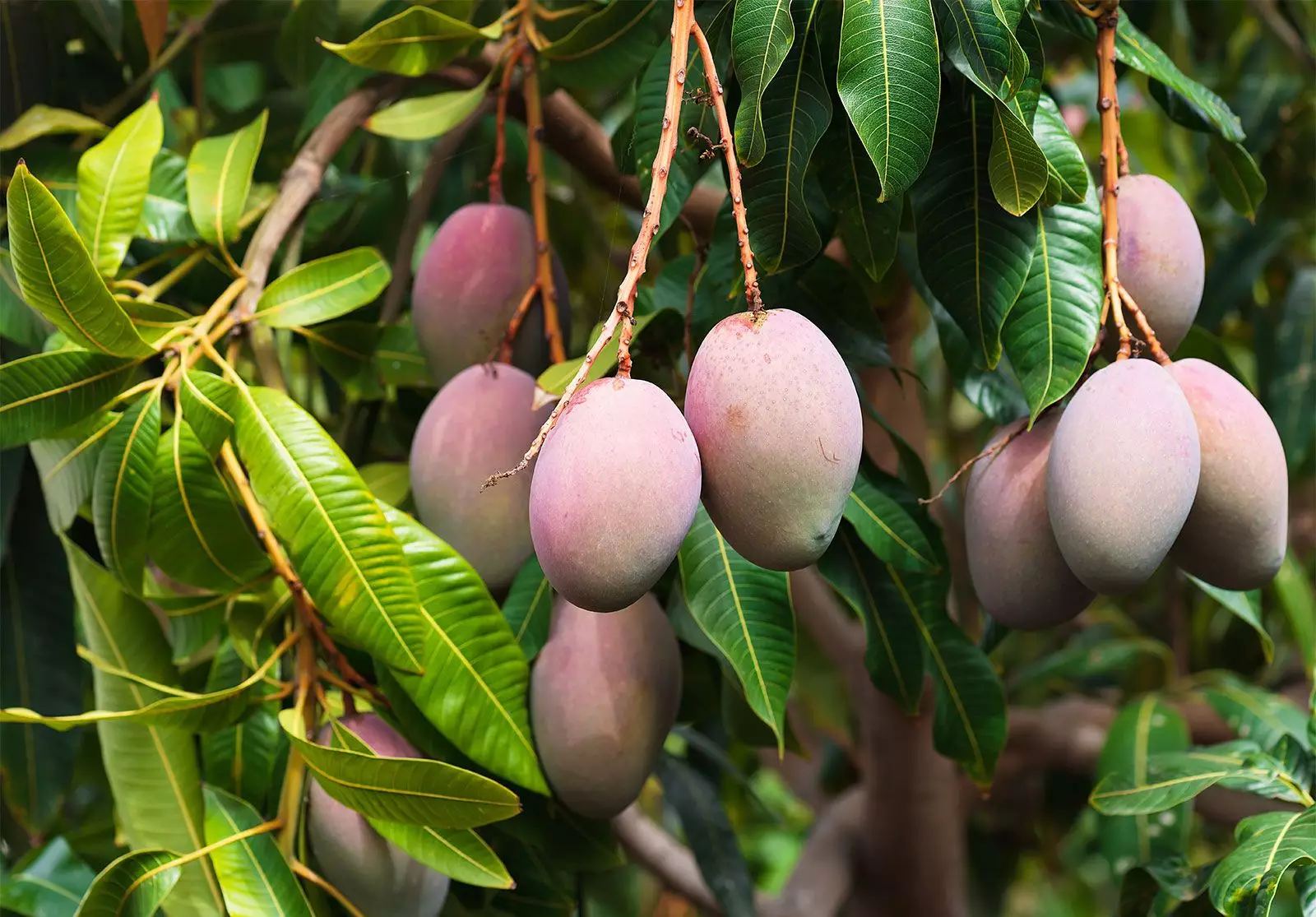Tropical fruits are known to be bursting with flavor, and Vietnamese mango is no exception. It is highly sought after for its sweet and juicy taste.
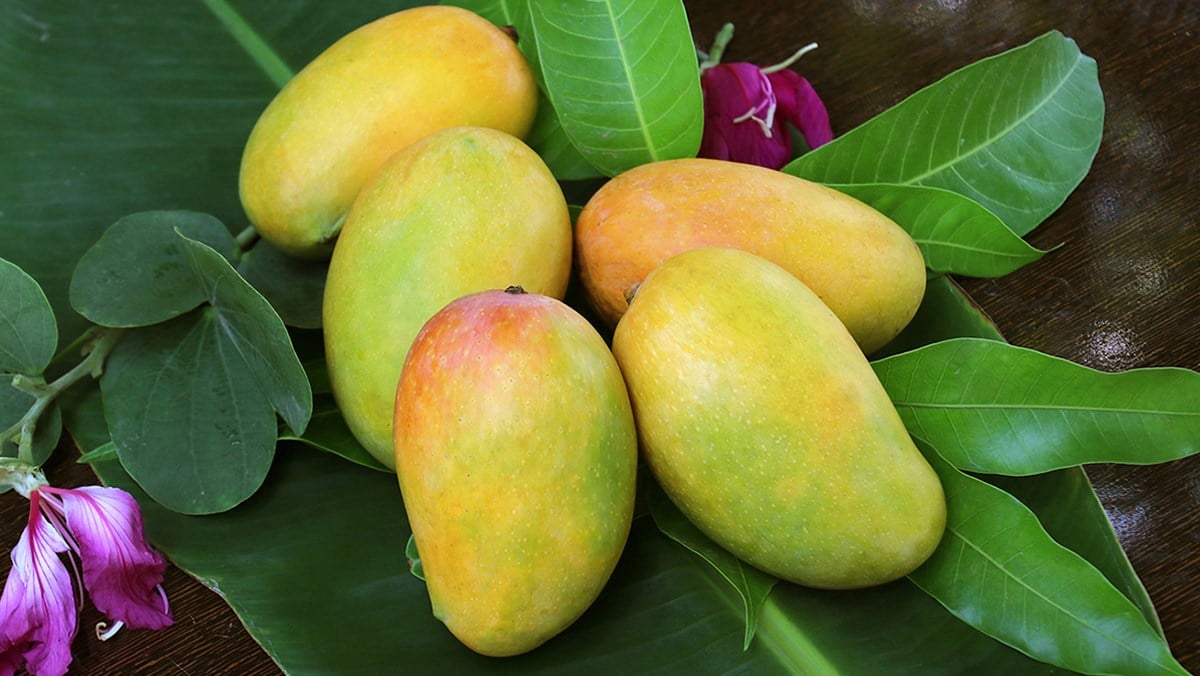
As you embark on your Vietnam travel, you will not only learn the country’s rich culture but also enjoy the delectable cuisine that allures travelers. Being a tropical country, Vietnam offers many exotic fruits like dragon fruit, jackfruit, etc. Known for its sweet and juicy taste, Vietnamese mango is one of the most popular fruits in Vietnam. Read on to explore different types of mango, prices, and some mango dishes.
1. About Vietnamese mango – a popular tropical fruit
Vietnam has a long-standing tradition of cultivating mangoes, which are grown in various ecological regions. The cultivation of Vietnamese mango spans from the south to the north, and the largest mango-producing provinces are located in the Mekong Delta, such as Tien Giang, An Giang, Dong Thap, Vinh Long, Can Tho, and Ben Tre.

Ripe mangoes are enticing with their vibrant yellow color, sweet and sour taste, and delightful aroma, making them a beloved and esteemed fruit to Vietnamese people. In terms of nutritional content, every 100g of Vietnamese mango contains around 60 kcal with minimal fat. Moreover, each mango provides approximately 1.6g of dietary fiber beneficial for digestive health, contributing to the recommended daily intake.
Mangoes are rich in various vitamins, including vitamin A for eye health and vitamin C for skin vitality, and diverse minerals such as potassium, magnesium, and copper. Additionally, compounds like quercetin, beta-carotene, and astragalin in mangoes exhibit strong antioxidant properties, neutralizing free radicals and potentially preventing aging, cancer, and cardiovascular diseases. For pregnant women and individuals with anemia, mangoes can serve as a valuable source of iron.
2. Popular types of mangoes in Vietnam
2.1. Hoa Loc mango (xoai Hoa Loc)
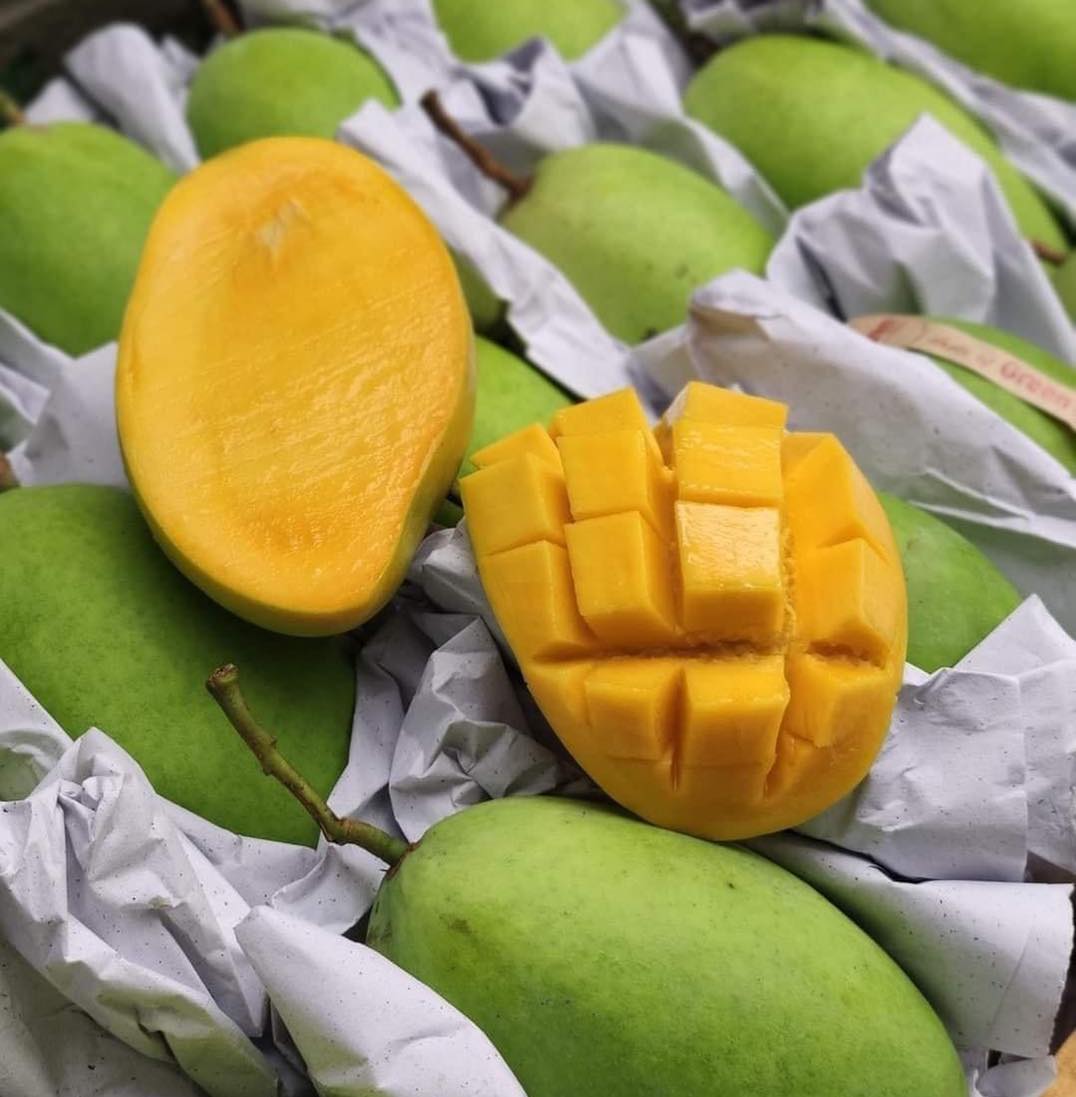
Hoa Loc mango is a renowned specialty fruit from the Mekong Delta region of Vietnam, weighing 350-450g with an elongated shape. When ripe, the skin turns light yellow while the flesh is firm, smooth, and low in fiber. This type of Vietnamese mango is consumed when fully ripe with a rich, pleasant aroma and a deep, sweet flavor. Hoa Loc mango is also used in sweet treats like mango smoothies and ice cream.
2.2. Cat Chu mango (xoai Cat Chu)
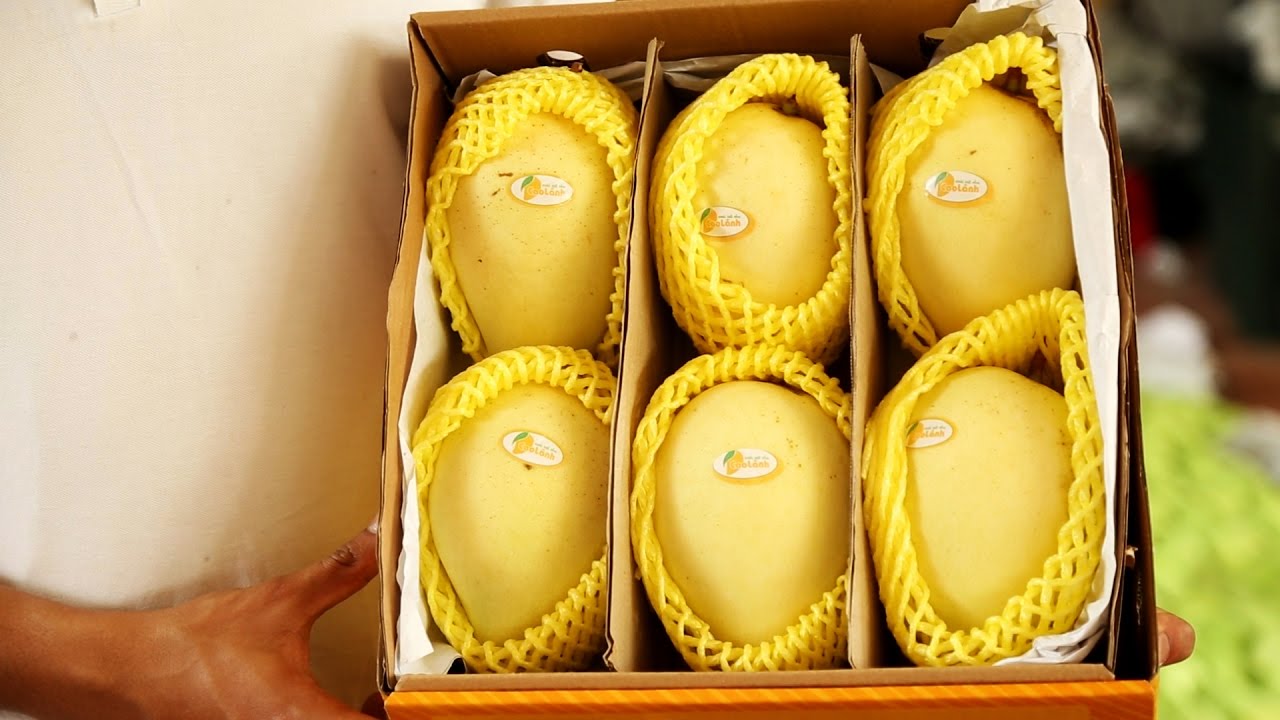
Cat Chu mango is small, round at the top, and slightly elongated. This mango variety is smaller compared to Hoa Loc mango, with an average weight of around 350g per fruit. The distinctive feature of Cat Chu mango is its small seeds, lack of fiber, and thick mango flesh. It is highly aromatic with delightful taste.
2.3. Thanh Ca mango (xoai Thanh Ca)
Thanh Ca mango is a popular Vietnamese mango variety, weighing between 250g to 450g, with a nice fragrant, long shape, and slightly curved tip. Its flesh is often peeled and sliced, earning it the nickname “xoai mut” (peeled mango). The vibrant yellow flesh is firm, smooth, and low in fiber, providing a sweet and refreshing taste.
2.4. Acacia mango (xoai keo)
Vietnamese people are fond of not only ripe mangoes with soft flesh but also unripe crunchy mangoes. Acacia mango (xoai keo) is a green, round fruit with a sticky, resinous substance. When ripe, it changes color to yellow and is rich in fiber. Because of its sour taste, Acacia mango is considered the top choice for making salads and Vietnamese mango shakes.
2.5. Elephant mango (xoai tuong)
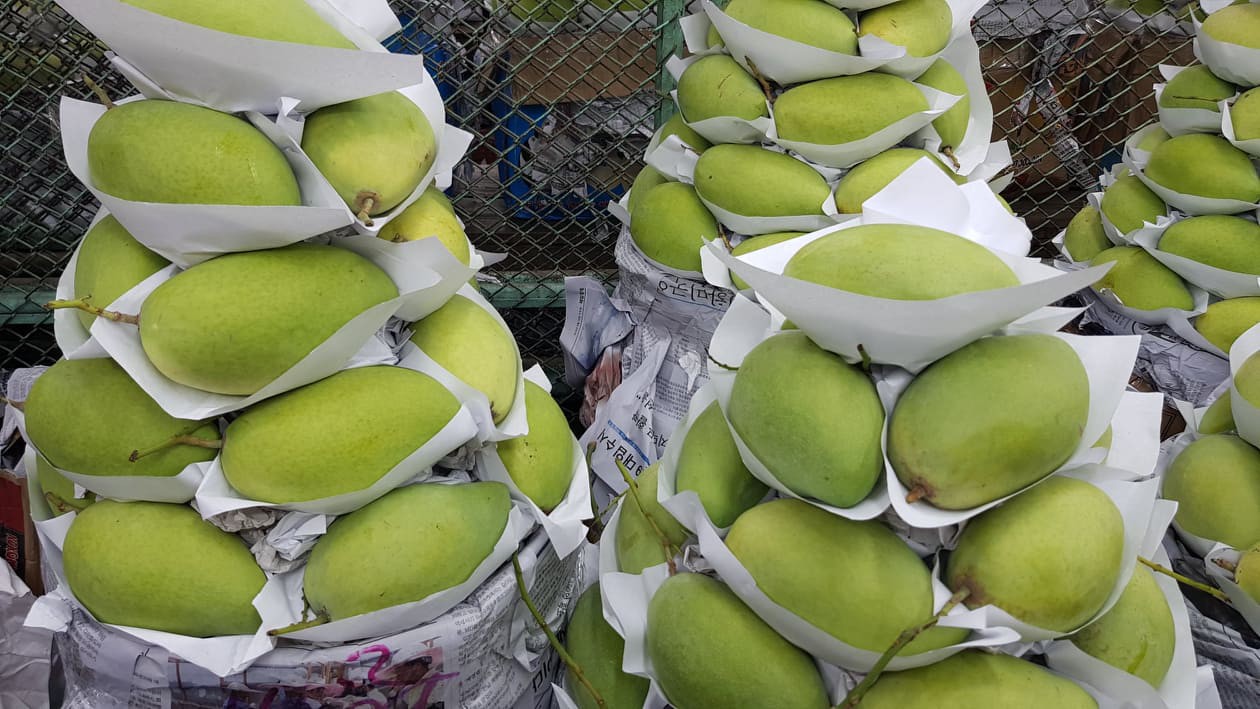
Xoai tuong, also known as Elephant mango, boasts a robust size of up to 1kg. Grown in Binh Dinh Province, it has an elongated shape and green skin when unripe. As it ripens, the skin turns yellow. The mango offers a crunchy texture, pleasant aroma, and tangy flavor.
2.6. Four-quarter mango (xoai tu quy)
Four-quarter mango (xoai tu quy) is a Vietnamese mango variety with a robust appearance, weighing up to 2kg. It is cultivated in Southern Vietnam and has a bright yellow color when ripe. The flesh is low in fiber and has a crisp texture. The skin of this mango is thin and the seeds are small. The flavor is more enjoyable when unripe.
3. The average prices of Vietnamese mangoes
In local markets and grocery stores, Hoa Loc mango is available for 60,000 VND/kg for the larger size, while the medium and small sizes are priced between 25,000 VND and 45,000 VND/kg. Cat Chu mango is sold from 70,000 VND to 80,000 VND/kg. On the other hand, Acacia mango costs from 15,000 VND to 60,000 VND/kg. Elephant mango ranges from 45,000 VND to 50,000 VND/kg. Flat-seed mango is cheaper, with prices ranging from 35,000 VND to 40,000 VND/kg. Note that these numbers are for reference purposes only and may change depending on market fluctuations.
4. Culinary uses of Vietnamese mangoes
Vietnamese mango can be used as an ingredient for many delectable dishes. Depending on the dishes and the Vietnam mango varieties, you can use either a ripe or an unripe mango.
4.1. Vietnamese prawn and mango salad (goi xoai tom)

Vietnamese prawn and mango salad is a popular Vietnamese food loved by the locals. This delicious Vietnamese green mango salad has a perfect blend of sour, spicy, salty, and sweet flavors that captivate the taste buds. Vietnamese mango salad is made by chopping carrots and mangoes into bite-sized slices, then mixing fish sauce, sugar, garlic, and chili as a salad dressing to elevate the taste. Roasted peanuts, basil, and cilantro are added to enhance Vietnamese mango shrimp salad.
4.2. Vietnamese mango sticky rice (xoi xoai)

This variation of Vietnamese sticky rice is especially popular in Southern Vietnam, as there are more mangoes grown in this region than in the North. To make this dish, mango slices are combined with steamed sticky rice that has been softened with coconut milk. The dish is often topped with a sprinkle of toasted sesame seeds or a drizzle of sweet coconut sauce for added flavor and texture.
4.3. Vietnamese pickled green mango (xoai ngam chua ngot)
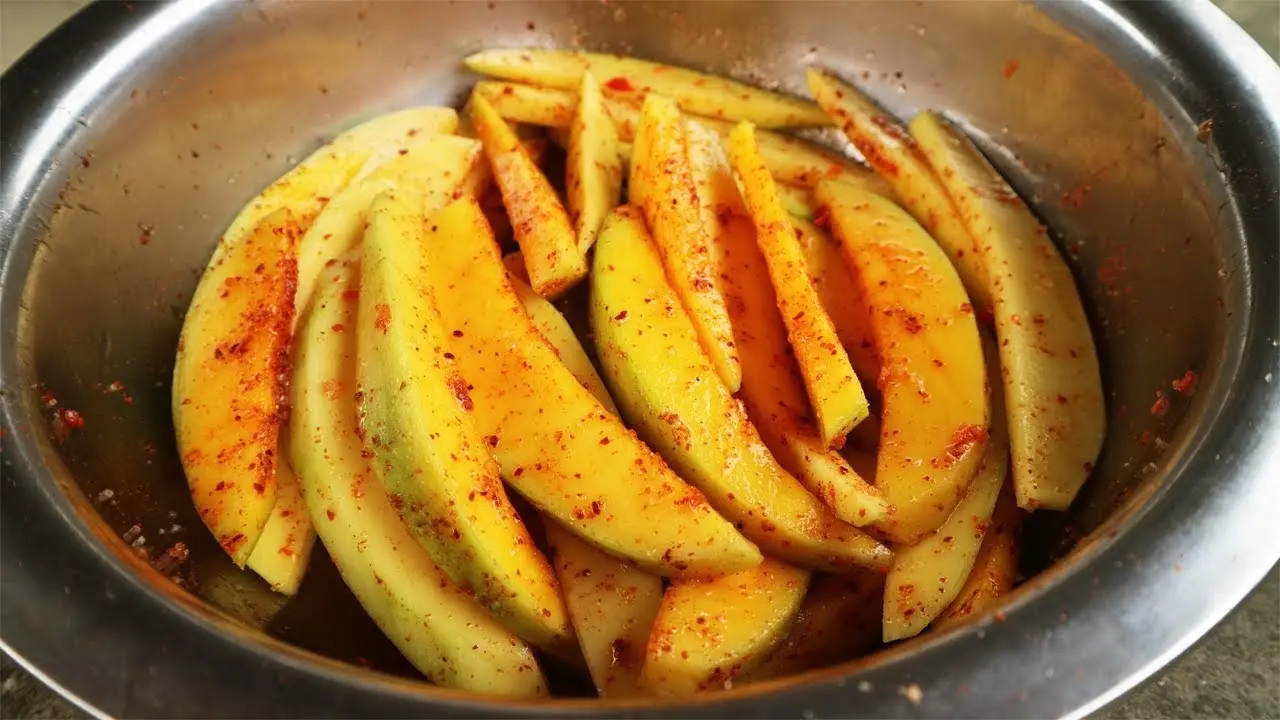
Vietnamese pickled green mango is probably no stranger to veggie enthusiasts. It is made by cutting the mango into bite-sized pieces and preparing chili slices, which are mixed in a glass jar. Vinegar is poured into the jar until the mango is fully submerged, and the jar is sealed before being refrigerated. This delectable sweet and sour mango dish is often enjoyed as a snack or side dish in daily meals.
4.4. Vietnamese mango smoothie (sinh to xoai)
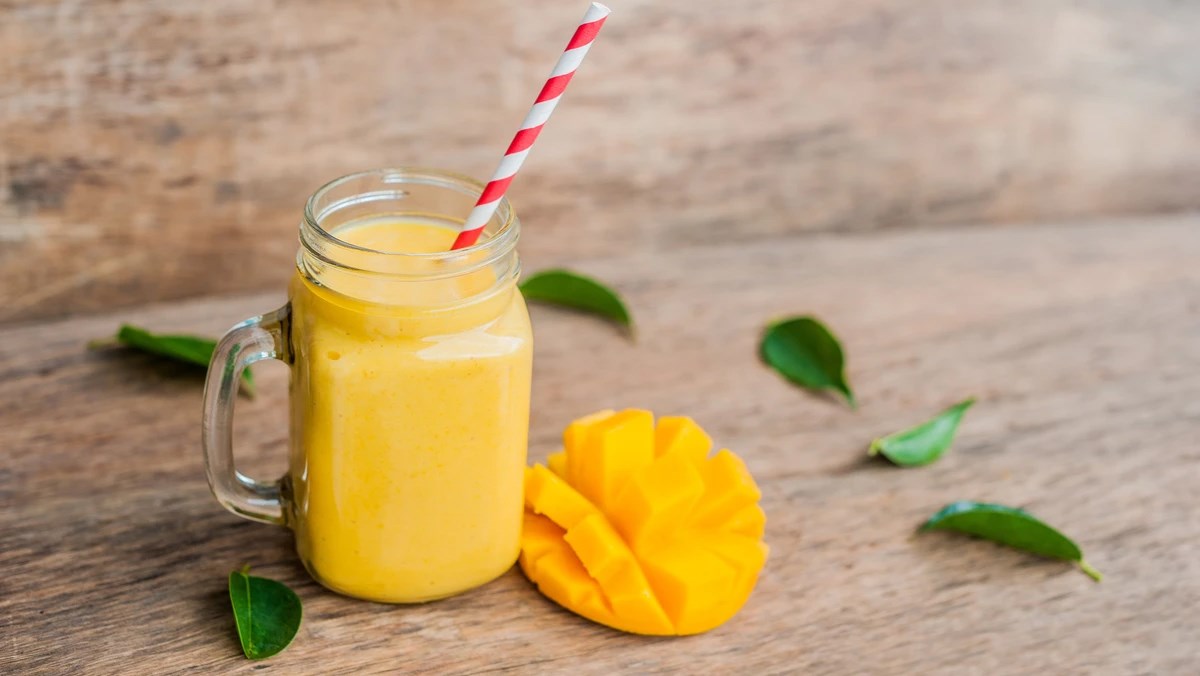
Mango smoothies are popular in Vietnam, prepared using ripe mangoes, milk, yogurt, ice, and a small amount of sugar. This Vietnamese mango dessert is among one of the most favorite Vietnamese smoothies thanks to the creamy texture, sweetness, and a hint of mango tanginess. Its refreshing tropical taste makes it a popular choice for those looking to cool down on a hot day.
4.5. Vietnamese mango pudding (pudding xoai)
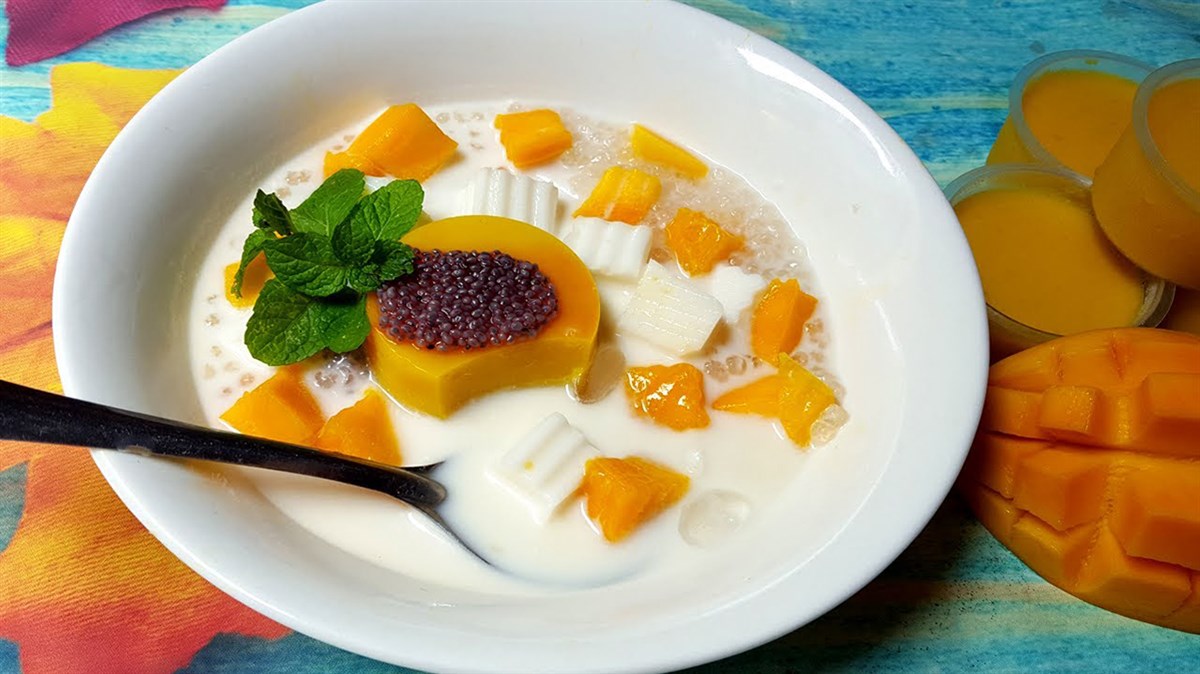
Vietnamese mango pudding is another dessert adored by young people. To make this treat, start by dissolving gelatin in water, blending half of the mango into a puree, and mixing it with lime juice. In a saucepan, combine water and sugar, bring to a boil, and add the expanded gelatin. Stir a mixture of mango and cream until they thicken, then refrigerate for approximately 2 hours until set. The result is a delightful mango pudding ready to be enjoyed.
Besides, green mangoes are also used to mix with fish sauce for braised dishes or street foods such as banh trang tron and spring rolls. Ripe mangoes can be canned dried or used as flavors in candy, ice cream, etc.
